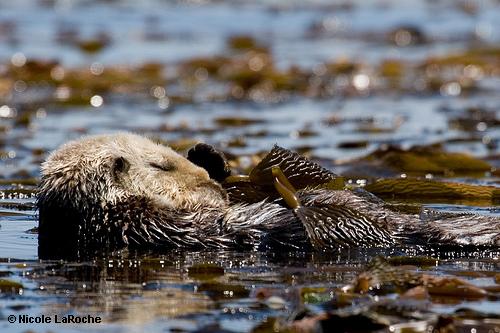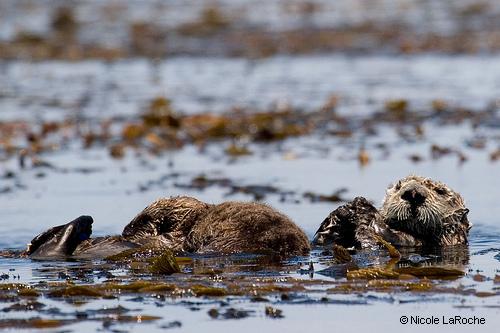| Home |
| Current Research |
| Graduate Students / Post Docs |
| Biologists / Technicians |
| Interns / Volunteers |
| Publications |
| Links |
| Our ftp site |
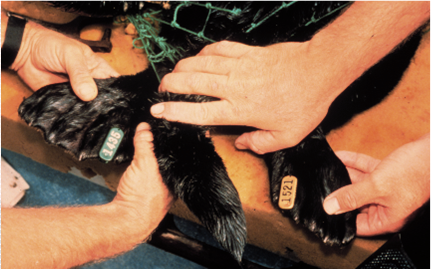
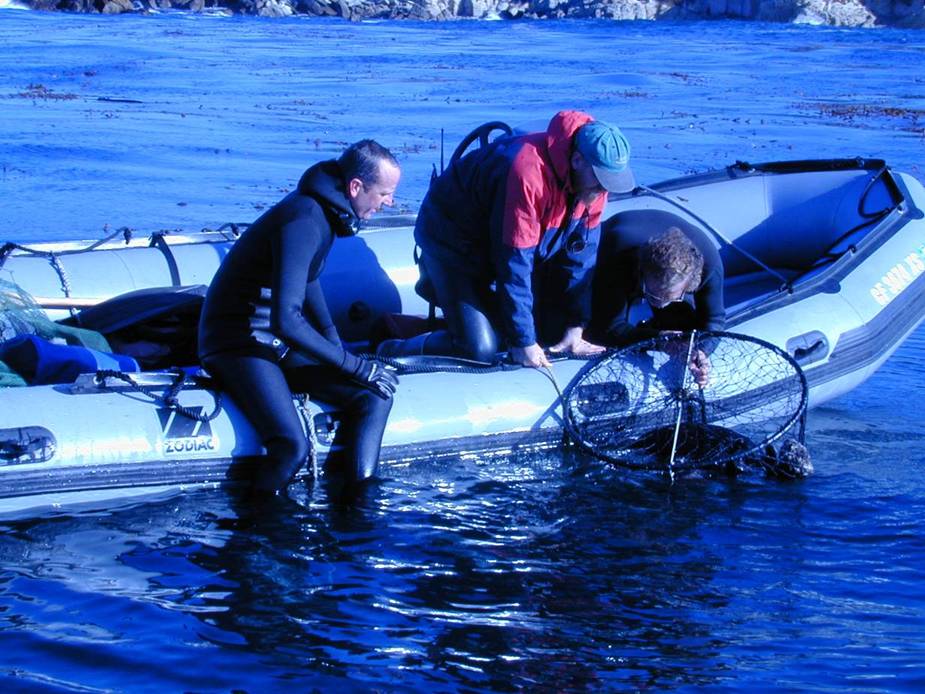

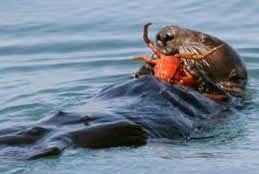
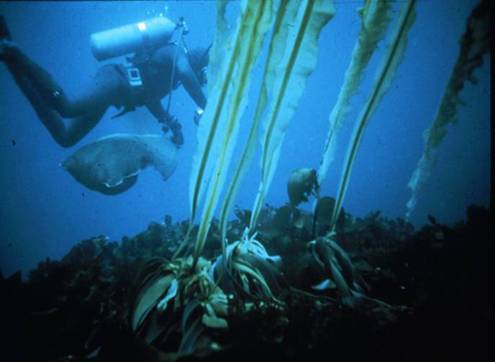
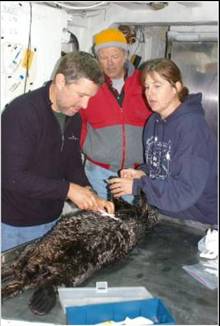
Sea otters in California forage as an apex marine predator in nearshore habitat that occurs along a densely human-populated coastline. Sea otters are unusual among marine mammals in that they live outside of their zone of thermal neutrality and consequently have extremely high metabolic demands. This trait, in conjunction with their distribution and the preponderance of filter feeding benthic invertebrates in their diet, makes southern sea otters especially susceptible to human-induced stressors in their environment, and as such they are effective sentinels of the health of California 's coastal ocean. Their utility as a sentinel (or indicator) of ecosystem health is further increased by their nearshore distribution and their tractability for observational study: in effect, sea otters can “tell us” how they acquire particular contaminants or disease pathogens via detailed measurements of where they live and what they eat. Sea otters also play a vital ecological role in coastal ecosystems as a keystone predator, and their relative abundance can have profound effects on both the productivity and biodiversity of kelp forest communities.
|
|
|
For the past 10-15 years, elevated mortality, especially in reproductive females, has limited the rate of recovery of the California sea otter population and prevented its delisting from “threatened” status. For effective management, regulation, engineering and enforcement programs to be implemented, we must first untangle the cause and effect relationships between putative risk factors (such as geographic location, diet, genetic effects, contaminant burdens and pathogen exposure) and specific sources of mortality or impacts to animal health (such as infectious disease). Developing a mechanistic understanding of these processes will allow us to target the ultimate drivers of mortality limiting population recovery, rather than simply treating the symptoms. |
The cooperative unit of USGS and UC Santa Cruz along with its collaborators in California has established a long-term research program to obtain that information. Telemetry-based population studies are ongoing in Monterey , and a new study area has just been established along the Big Sur coast, based out of the Big Creek Reserve. In both study areas, sea otters have been captured, bio-sampled, instrumented with VHF transmitters and archival time-depth recorders, and then released, and are now being intensely monitored for the next 3 year period. Data are collected on age-specific survival, reproduction, individual health, contaminant exposure, disease incidence, diet and feeding behavior, activity budgets, individual movements and habitat use. By contrasting data collected from Big Sur (an area of low human impact and minimal pollution) and Monterey (an area of high human impact and pollution levels), inferences will be made about the relationships between near-shore water quality, chemical/pathogen pollution, and sea otter population health and demography. We are also learning more about sea otters functional role in kelp forest food webs, by integrating our data on sea otter diets and foraging behavior with information on benthic invertebrate community structure collected by the PISCO program and other collaborators working within the waters adjacent Big Creek Reserve. |
|
Contact Us: USGS Santa Cruz Field Station - 100 Shaffer Road - Center for Ocean Health - Room 251 - Santa Cruz, CA 95060 - 831 459-2357 - werc@ucsc.edu
